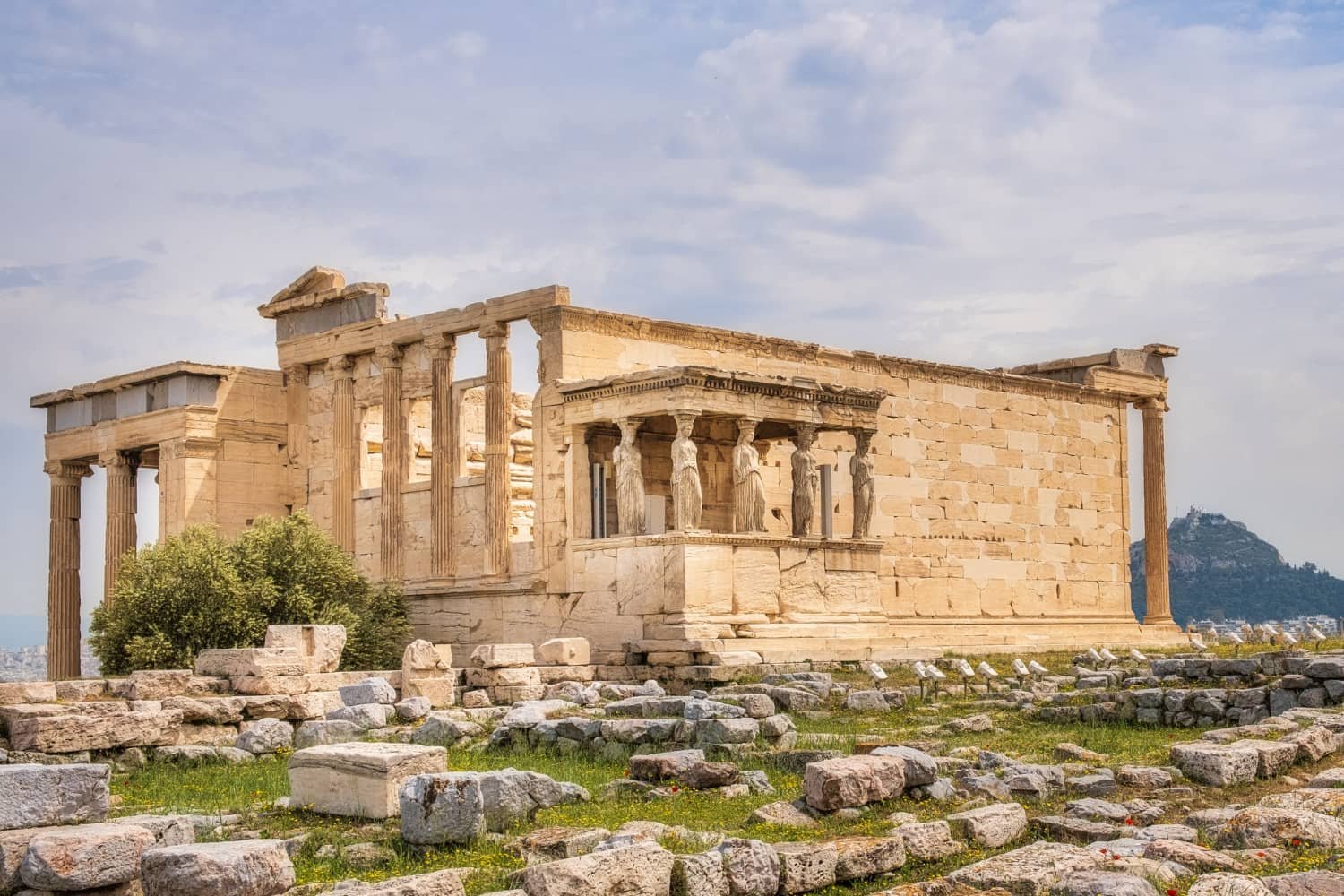In this article, we will delve into some of the most renowned UNESCO World Heritage Sites in Greece, uncovering their historical significance and capturing their enduring allure. Join us as we embark on a virtual tour that celebrates Greece’s cultural treasures and illuminates its extraordinary contribution to human civilization.
Greece is renowned for its rich history and cultural significance, beautifully reflected in its numerous UNESCO World Heritage Sites. These sites have been carefully selected by the United Nations Educational, Scientific and Cultural Organization (UNESCO) due to their outstanding universal value. From ancient ruins to stunning natural landscapes, Greece boasts an impressive range of sites that showcase the country’s historical importance.
Greece, a land deeply embedded in history and culture, boasts an impressive collection of UNESCO World Heritage Sites. These sites are testaments to the country’s rich architectural and archaeological heritage and attract millions of visitors annually.
UNESCO World Heritage Sites in Greece
From ancient temples to medieval fortifications, Greece offers a remarkable journey through time. Travelers can explore the birthplace of democracy and marvel at the remnants of once-mighty civilizations.
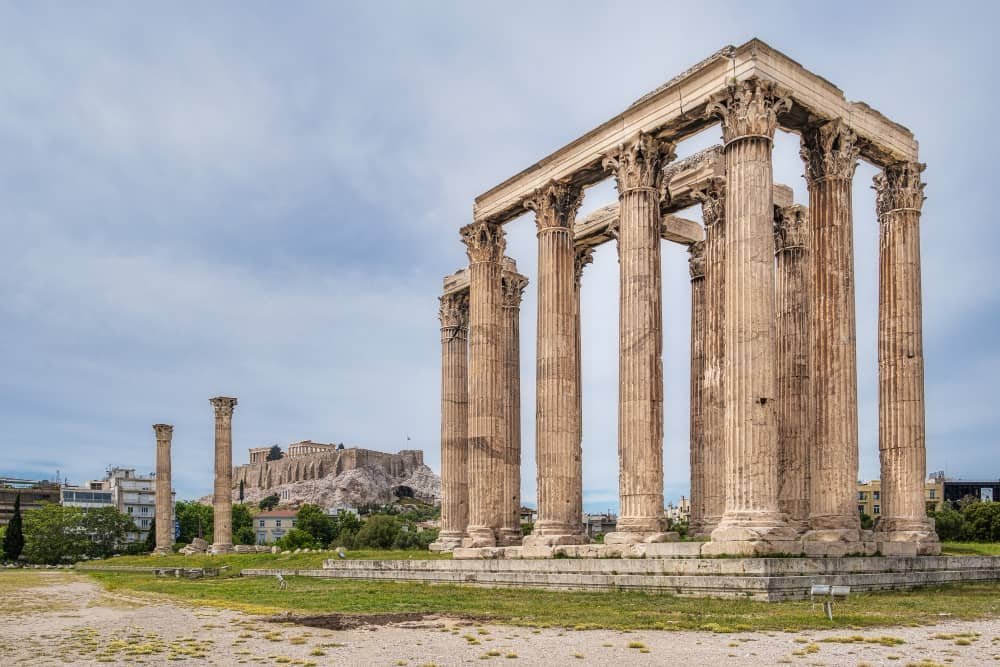
Acropolis of Athens
One of the most iconic UNESCO World Heritage Sites in Greece is the Acropolis of Athens. Situated on a rocky hilltop overlooking the city, this ancient citadel is home to architectural marvels such as the Parthenon, Erechtheion, and Propylaea. Dating back to the 5th century BC, these structures represent classical Greek architecture and stand as symbols of democracy and intellectual achievement.
Standing atop a rocky hill overlooking the vibrant city of Athens, this ancient citadel holds significant historical and cultural value. The Acropolis, famous for its stunning architecture and deep historical roots, has mesmerized tourists worldwide for countless generations.
The Acropolis symbolizes the birthplace of democracy and Western civilization. Dating back to the 5th century BCE, it encompasses various awe-inspiring structures, including the iconic Parthenon, Erechtheion, Propylaea, and Temple of Athena Nike. These magnificent edifices stand as testaments to ancient Greek ingenuity and artistic excellence.
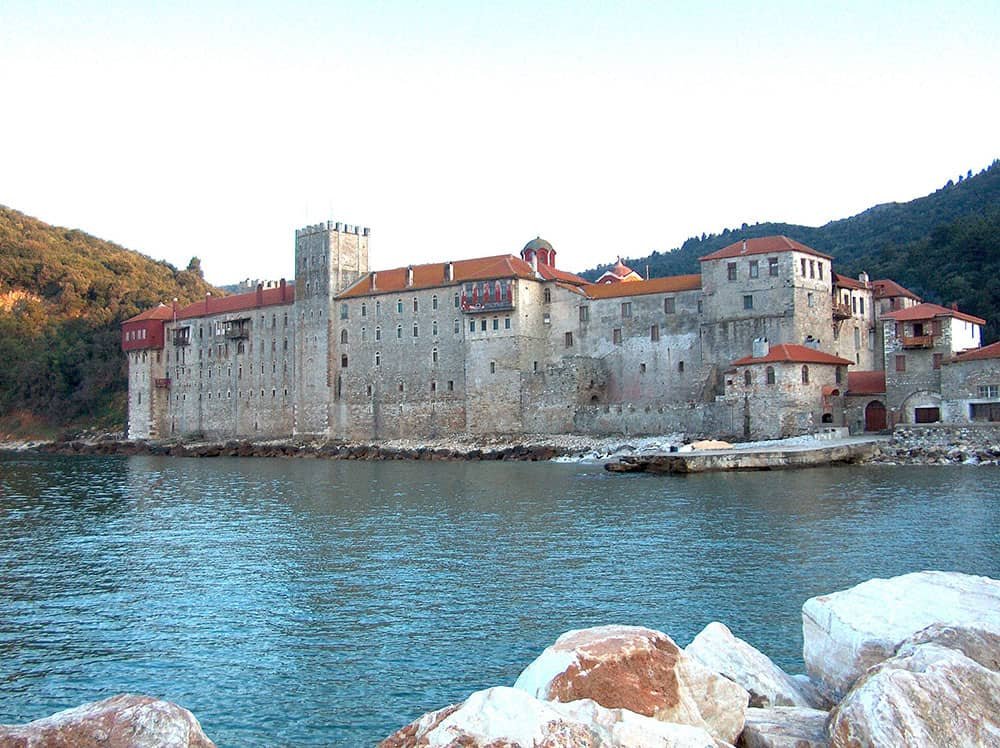
Mount Athos
Mount Athos in Greece is a sanctuary of serene beauty and spiritual significance. Nestled on the easternmost peninsula of Halkidiki, this UNESCO World Heritage Site is a monument to Orthodox Christianity. Known as the Holy Mountain, Mount Athos has been a place of devotion and prayer for over a millennium, attracting pilgrims from all corners of the globe. Its unique blend of natural grandeur and religious heritage has earned it a cherished spot among Greece’s most revered treasures.
Home to 20 monasteries and countless hermitages, Mount Athos presents an awe-inspiring landscape where time seems to stand still. With its profound religious importance and serene environment, Mount Athos holds immense allure for pilgrims and tourists who seek solace, enlightenment, or simply an opportunity to immerse themselves in one of Greece’s most treasured treasures.
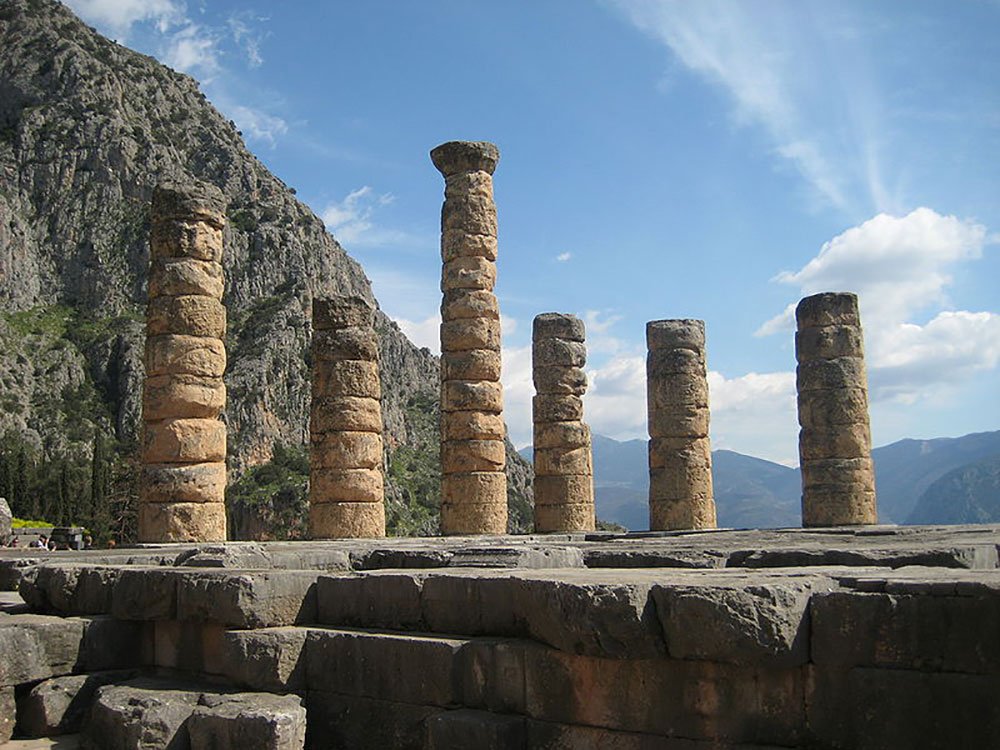
Archeological site of Delphi
The archeological site of Delphi in Greece is a renowned UNESCO World Heritage Site with immense historical and cultural significance. Nestled in the breathtaking landscapes of Mount Parnassus, Delphi served as a significant religious sanctuary and an oracle for the ancient Greeks.
This site was dedicated to Apollo, the Greek god of prophecy, in the 8th century BCE. Today, it stands as a testament to classical Greece’s rich heritage and architectural marvels, attracting countless visitors eager to explore its fascinating ruins and unravel its mysteries.
In the 6th century BCE, the ancient city of Delphi held a significant position as the religious center and symbol of unity in the Greek world. Located on Mount Parnassus in central Greece, this UNESCO World Heritage Site continues to captivate visitors with its rich history and timeless allure.
Delphi served as the sanctuary of Apollo, the Greek god of prophecy and wisdom. It attracted pilgrims from all corners of ancient Greece who sought guidance, answers, and divine intervention.
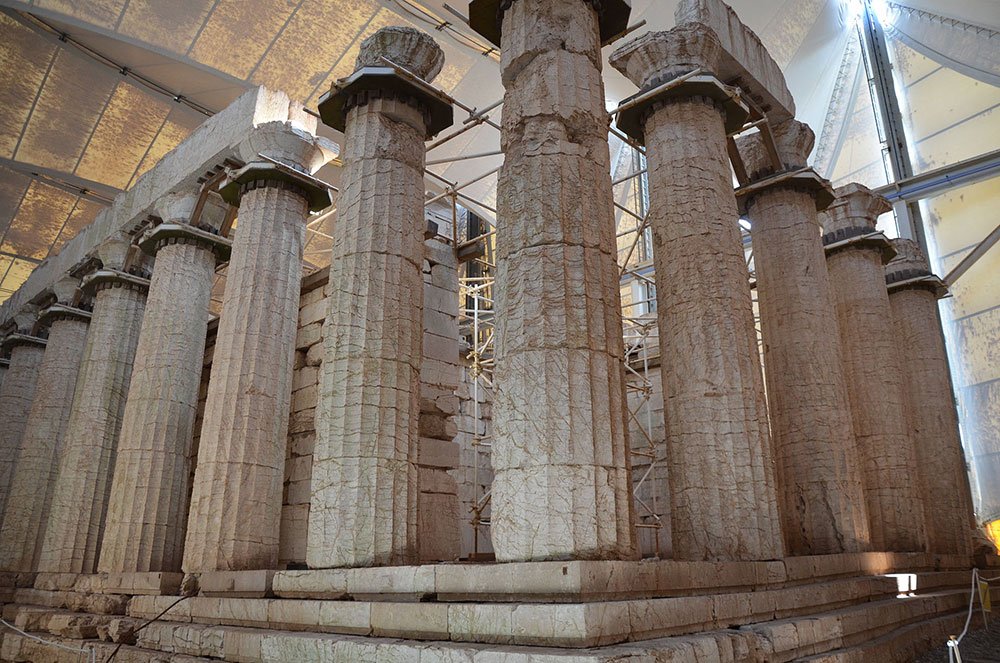
Temple of Apollo Epicurius at Bassae
The Temple of Apollo Epicurius at Bassae, located in the mystical land of Greece, stands as a testament to ancient architectural genius and artistic excellence. As one of the UNESCO World Heritage Sites in Greece, this awe-inspiring temple has captivated visitors from around the globe with its remarkable preservation and historical significance.
Nestled amidst the rugged landscapes of Arcadia, this sacred sanctuary has endured centuries of turbulent history, remaining a symbol of human ingenuity and devotion to the gods. Join us on an exploratory journey into the heart of ancient Greece as we unlock the secrets and unravel the mysteries surrounding this magnificent temple.
Dating back to the 5th century BC, this majestic temple remains an enduring symbol of human ingenuity and cultural significance. With its remarkable preservation and unique blend of Doric and Ionic architectural styles, it continues to captivate visitors from around the globe, offering a glimpse into ancient Greek civilization and its profound impact on art and architecture.
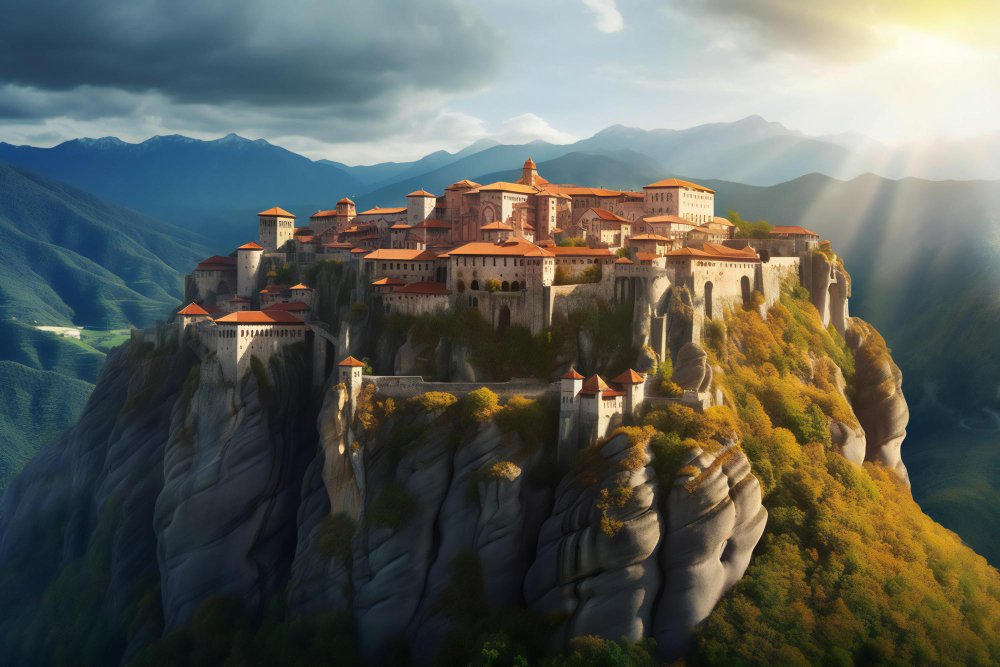
Meteora
Located in central Greece, Meteora is a mesmerizing landscape that enchants visitors with its otherworldly beauty. This remarkable UNESCO World Heritage Site is renowned for its extraordinary rock formations, crowned by monasteries that defy gravity. Perched atop towering sandstone pillars, these ancient monastic complexes provide a breathtaking sight that leaves visitors in awe of human ingenuity and devotion.
As one of Greece’s most iconic destinations, Meteora offers a unique blend of natural wonders and cultural significance, making it an absolute must-visit for any traveler seeking to explore the country’s rich history and unparalleled landscapes.
With its breathtaking monasteries, dramatic landscapes, and rich cultural heritage, Meteora offers an experience as it effortlessly blends history, spirituality, and natural wonders into one mesmerizing destination.
The Meteora consists of sandstone peaks forming a rock formation. These peaks are home to 24 Orthodox monasteries, most of which were constructed on the challenging-to-reach peaks during the 15th century when the eremeric ideal experienced a resurgence. The monasteries are adorned with frescoes from the 16th century, marking an important milestone in the evolution of post-Byzantine painting.
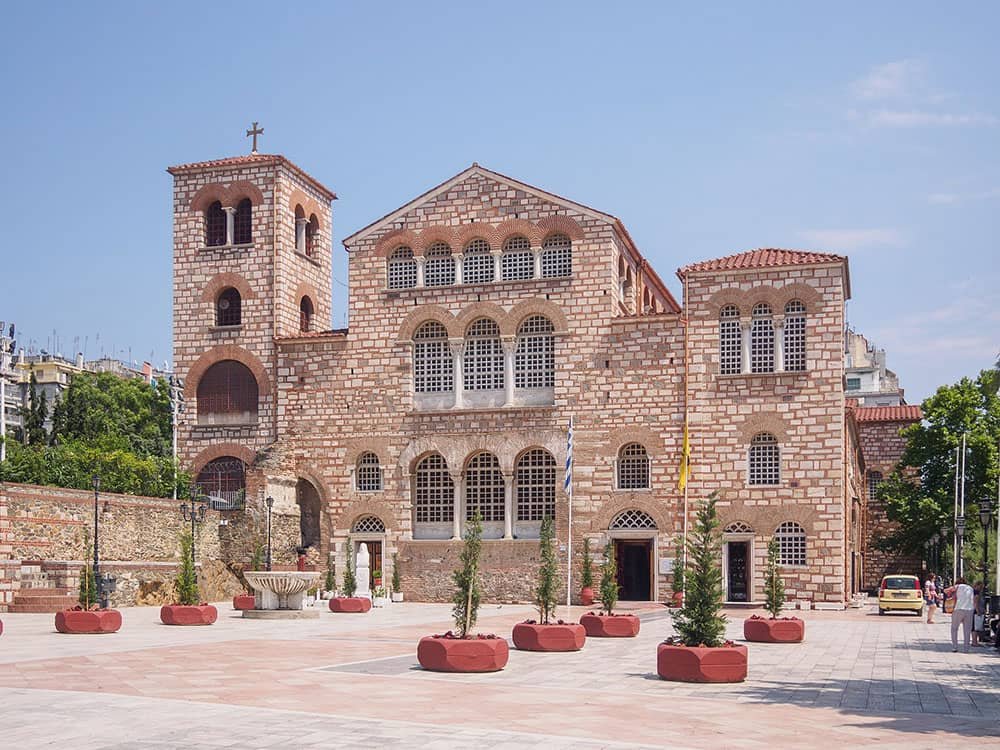
Paleochristian and Byzantine monuments of Thessaloniki
Thessaloniki, a vibrant city in northern Greece, is known for its rich history, captivating culture, and remarkable collection of Paleochristian and Byzantine monuments. These architectural marvels, dating back to the early Christian and Byzantine periods, have earned their well-deserved recognition as UNESCO World Heritage Sites in Greece.
Visitors traverse the streets of Thessaloniki and are transported back in time, discovering awe-inspiring structures that witness the city’s significant role during these historical eras. From intricate mosaics to grand basilicas, these monuments offer a glimpse into the religious and artistic legacy of bygone centuries that continue to leave visitors awe-struck with their beauty and cultural significance.
These iconic structures have withstood the test of time and hold immense religious significance for Christians worldwide. One of the earliest centers for expanding Christianity was Thessalonika, which encompasses various churches such as the Church of Hosios David and Hagios Demetrios.
These churches, along with city walls from the early Byzantine era, were built between the 4th and 15th centuries. In addition, the Rotunda, originally constructed under the orders of Roman Emperor Galerius in the 4th century, was later converted into a church. These significant landmarks in Thessaloniki are recognized as UNESCO World Heritage sites in Greece.
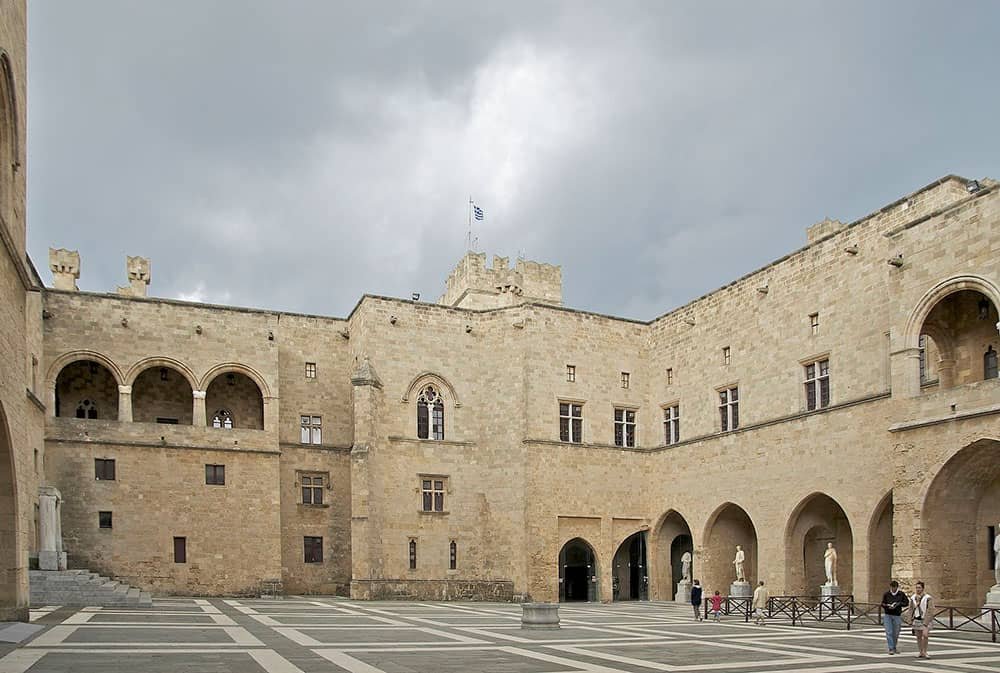
Medieval City of Rhodes
The Medieval City of Rhodes in Greece is a testament to this ancient land’s rich and fascinating history. Nestled on the northeastern coast of the island of Rhodes, this fortified city is an architectural marvel that has withstood the test of time. Recognized as one of the UNESCO World Heritage Sites in Greece, it embodies the legacy of various civilizations that once called this place home.
From its origins as a Byzantine stronghold to its transformation into a powerful medieval city under the Knights Hospitaller, Rhodes remains an enchanting destination for history lovers and curious explorers alike.
From 1309 to 1523, the Order of St John of Jerusalem (Knights Hospitaller) took control of the island of Rhodes. It converted the city into a formidable fortress, covering it with a 4-kilometer wall. These fortifications were constructed on top of the pre-existing Byzantine structures. Various Gothic-style towers dating back to that era are within the Upper town, such as the Palace of the Grand Masters, the Great Hospital, and the Street of the Knights. These remarkable sites in Greece have been recognized as UNESCO World Heritage sites.

The Historic Centre (Chorá) with the Monastery of Saint-John the Theologian and the Cave of the Apocalypse on the Island of Pátmos
The Historical Centre (Chor) with the Monastery of Saint John the Theologian and the Cave of the Apocalypse on the Island of Patmos, Greece, is a remarkable UNESCO World Heritage Site with immense historical and religious significance. Situated in the Dodecanese archipelago of Greece, this sacred site attracts thousands of visitors each year who explore its rich cultural heritage and delve into its profound spiritual aura.
At the heart of this historic center lies the Monastery of Saint John the Theologian, an architectural marvel that dates back to 1088 AD. Perched upon a hilltop overlooking Chora, Patmos’ main town, this monastery is a testament to Byzantine architectural prowess.
The Monastery of Saint John the Theologian is devoted to St John, who, according to Christian tradition, authored his Gospel and the Apocalypse on the island of Patmos. Established in the late 10th century, it has remained a significant destination for pilgrims and a center for Greek Orthodox education.
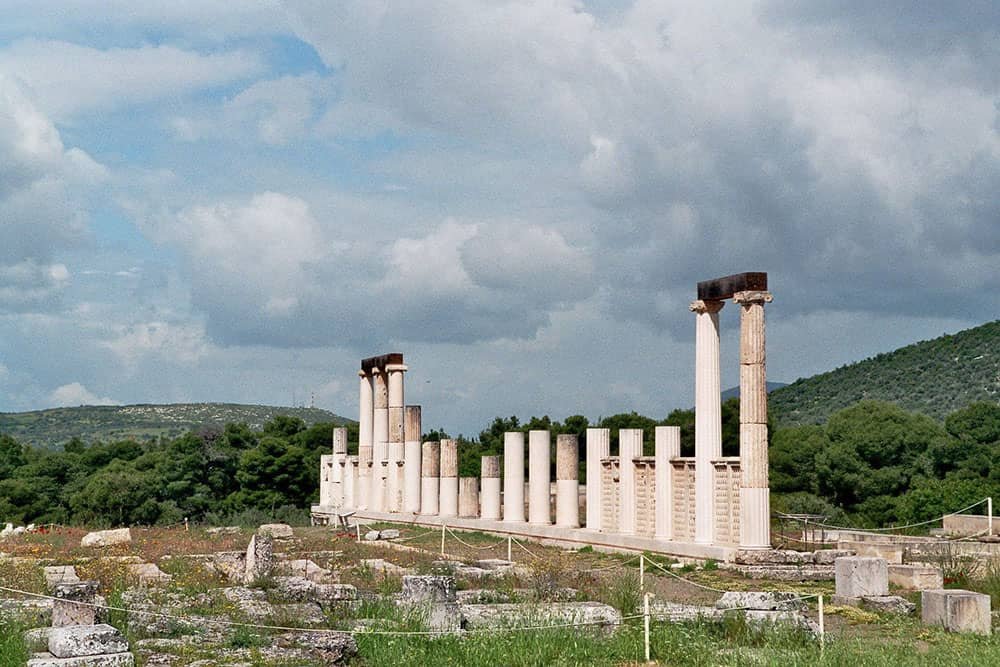
Sanctuary of Asklepios at Epidaurus
The Sanctuary of Asklepios at Epidaurus in Greece is a remarkable testament to the ancient world’s reverence for healing and medicine. Nestled amidst lush green hills, this UNESCO World Heritage Site is an architectural marvel that perfectly blends natural beauty with man-made ingenuity.
As one of the most important healing centers in ancient Greece, the Sanctuary of Asklepios attracts visitors from around the globe who seek to explore its rich history and experience its enduring spiritual aura. From its magnificent theater to its awe-inspiring temples, the Sanctuary offers a captivating glimpse into the ancient Greeks’ deep-rooted belief in divine intervention for physical and mental well-being.
In Greece, the city-state of Epidaurus witnessed the emergence of the cult of Asklepios, the god of medicine, no later than the 6th century BCE. Notable structures found at this location are the Temple of Asclepius, the Tholos, and the Theatre, renowned as the most exceptional ancient Greek theatre. This sanctuary holds significance in medical history as it signifies the shift from faith in divine healing to the advancement of medical science. These sites have been recognized as UNESCO World Heritage sites in Greece.
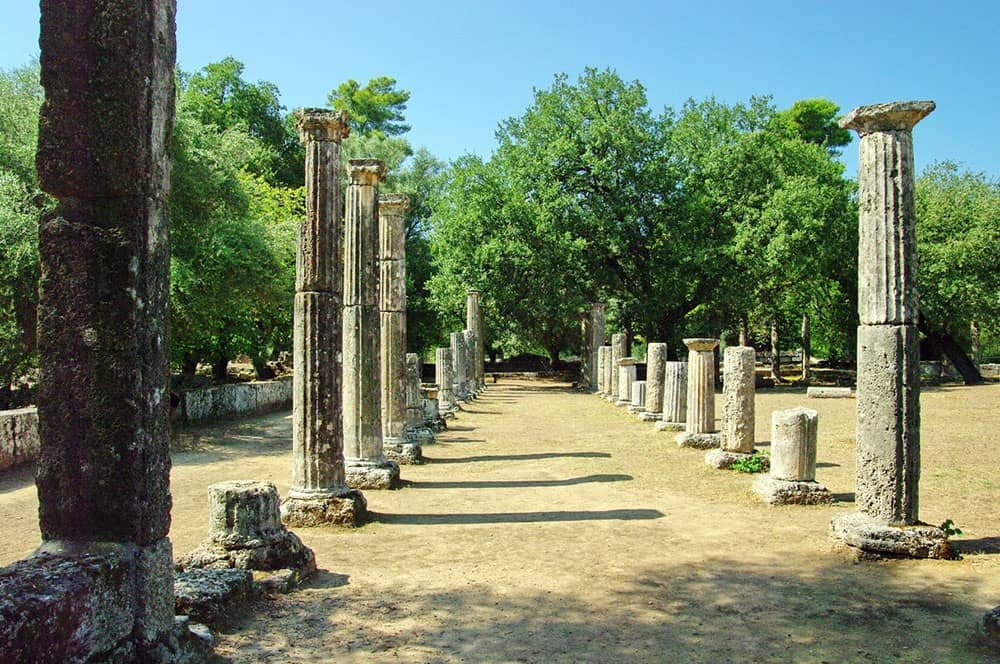
Archeological site of Olympia
Located in the western Peloponnese region of Greece, the archeological site of Olympia stands as a testament to the grandeur and heritage of ancient Greece. It is recognized as one of the UNESCO World Heritage Sites in Greece and holds immense historical and cultural significance.
As the birthplace of the Olympic Games, Olympia has become an emblematic symbol not only for sports enthusiasts but also for history buffs and travelers seeking to uncover the roots of ancient civilizations. Through its well-preserved ruins and sacred monuments, this archeological site offers a captivating glimpse into a bygone era that inspires awe and admiration even today.
Olympia, established as a hub for honoring Zeus in the 10th century BCE, served as a Panhellenic sanctuary and hosted the ancient Olympic Games from 776 BCE onwards. It preserves several athletic edifices’ remnants, including its stadium, alongside various temples and sanctuaries. These remarkable features have led to Olympia being recognized as one of Greece’s UNESCO World Heritage sites.
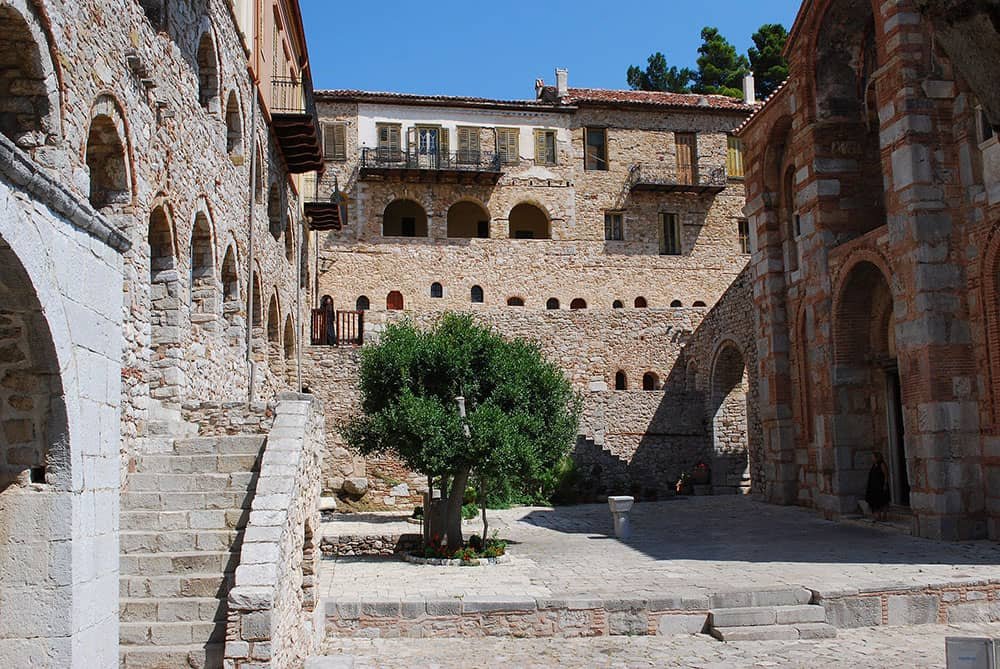
Monasteries of Daphni, Hosios Loukas, and Nea Moni of Chios
Greece, known for its rich historical and cultural heritage, is home to several magnificent UNESCO World Heritage Sites. Amongst these treasures are the Monasteries of Daphni, Hosios Loukas, and Nea Moni of Chios. These ancient monastic complexes stand as testaments to Byzantine artistry and spirituality, captivating visitors with their intricate mosaics, awe-inspiring architecture, and serene surroundings.
Each monastery has a unique story that intertwines Greek history with religious devotion, beckoning travelers to explore its hallowed halls and experience the profound tranquility it offers.
The middle period of Byzantine religious architecture is exemplified by these three monasteries situated in various regions of Greece, all possessing similar aesthetic features. All three churches follow an octagonal layout, with Nea Moni having a simple octagon while the other two incorporate a central space surrounded by bays. These sites are recognized as UNESCO World Heritage sites in Greece.
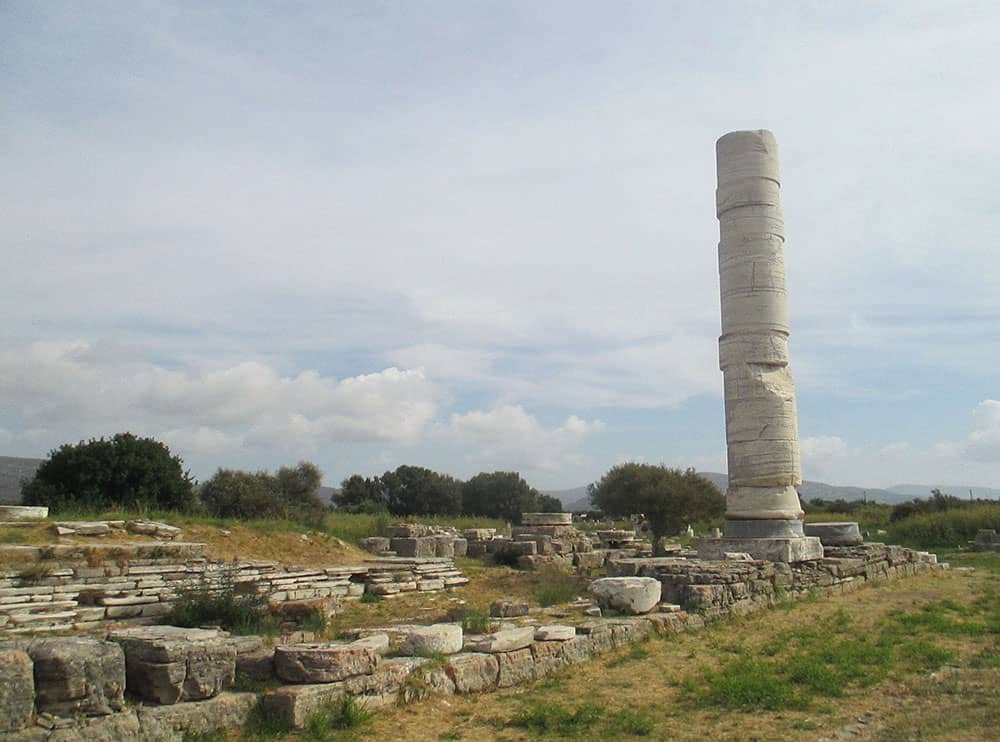
Pythagoreion and Heraion of Samos
The Pythagoreion and Heraion of Samos in Greece are two remarkable UNESCO World Heritage Sites that offer a captivating glimpse into the region’s ancient history and rich cultural heritage. Situated on the picturesque island of Samos, these archaeological marvels have been recognized for their outstanding universal value, preserving remnants of an era long gone.
The Pythagoreion is a testament to the influential mathematician and philosopher Pythagoras, while the Heraion is a homage to the Greek goddess Hera. With their intricate architecture, fascinating ruins, and captivating legends, these sites hold immense significance for Greece and humanity’s collective understanding of our shared past.
The island of Samos, located in the Aegean islands near Asia Minor, is significant due to its strategic location. It was a dominant force in maritime and trade activities, reaching its zenith during the 6th century BCE. The site encompasses the fortified ancient city known as Pythagoreion and the ancient Temple of Hera, which are recognized as UNESCO World Heritage sites in Greece.

Delos
Delos, a small island in the South Aegean Sea of Greece, is a treasure trove of ancient history and cultural significance. Recognized as one of the UNESCO World Heritage Sites in Greece, Delos holds immense archaeological value and has been a center of religious worship since ancient times. With its rich heritage and well-preserved ruins, this enchanting island offers visitors an unparalleled glimpse into the past.
As one of Greece’s most important mythological, historical, and archaeological sites, Delos is renowned as the birthplace of Apollo, the Greek god of light and music. According to mythology, Leto gave birth to Apollo on this sacred island after being pursued by Hera across various lands.
During the Archaic and Classical periods, the sacred island of Delos held significant importance as one of the most crucial Panhellenic sanctuaries, being recognized as the birthplace of Apollo and Artemis according to Greek mythology.
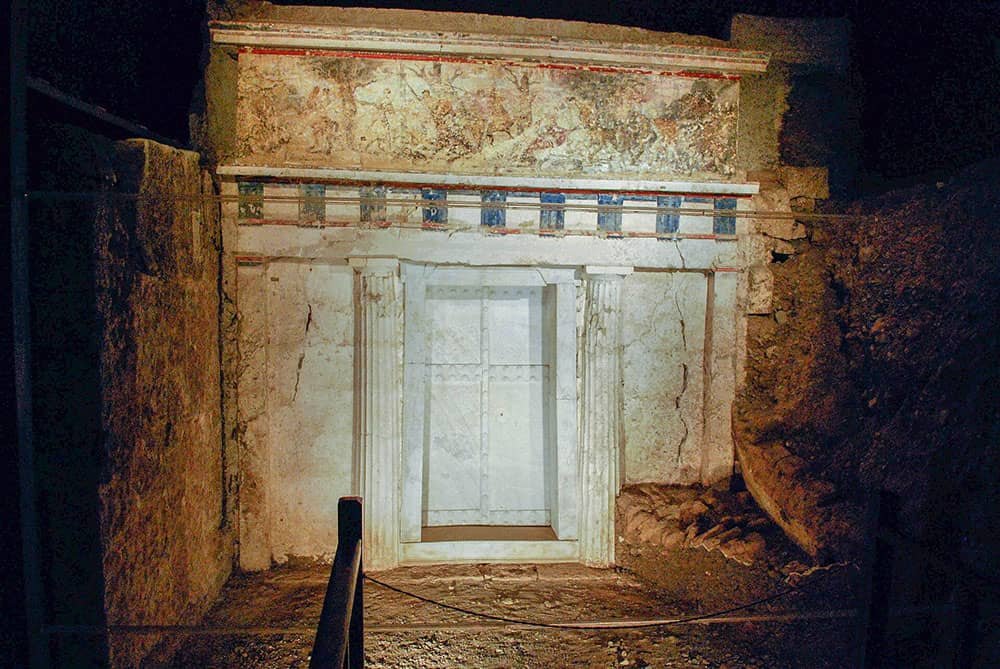
Archaeological Site of Aigai
The Archaeological Site of Aigai, located in Macedonia, Greece, is a remarkable testament to the rich history and cultural heritage of one of Europe’s oldest civilizations. As one of the UNESCO World Heritage Sites in Greece, Aigai holds immense significance as the ancient capital of Macedon and the birthplace of Alexander the Great.
This archaeological site offers a unique opportunity to delve into the past and explore the remnants of a once-thriving city that played a crucial role in shaping Greek history and beyond. With its architectural marvels, well-preserved royal tombs, and captivating artifacts, Aigai is a symbolic representation of classical antiquity and a window into understanding ancient Greek civilization at its zenith.
Aigai, an ancient city, served as the initial capital of the Kingdom of Macedon. Alongside the grand palace adorned with exquisite mosaics and painted stuccoes, the location boasts a burial site holding over 300 tumuli, some of which date back to the 11th century BCE. These remarkable features have earned Aigai a place among Greece’s UNESCO World Heritage sites.
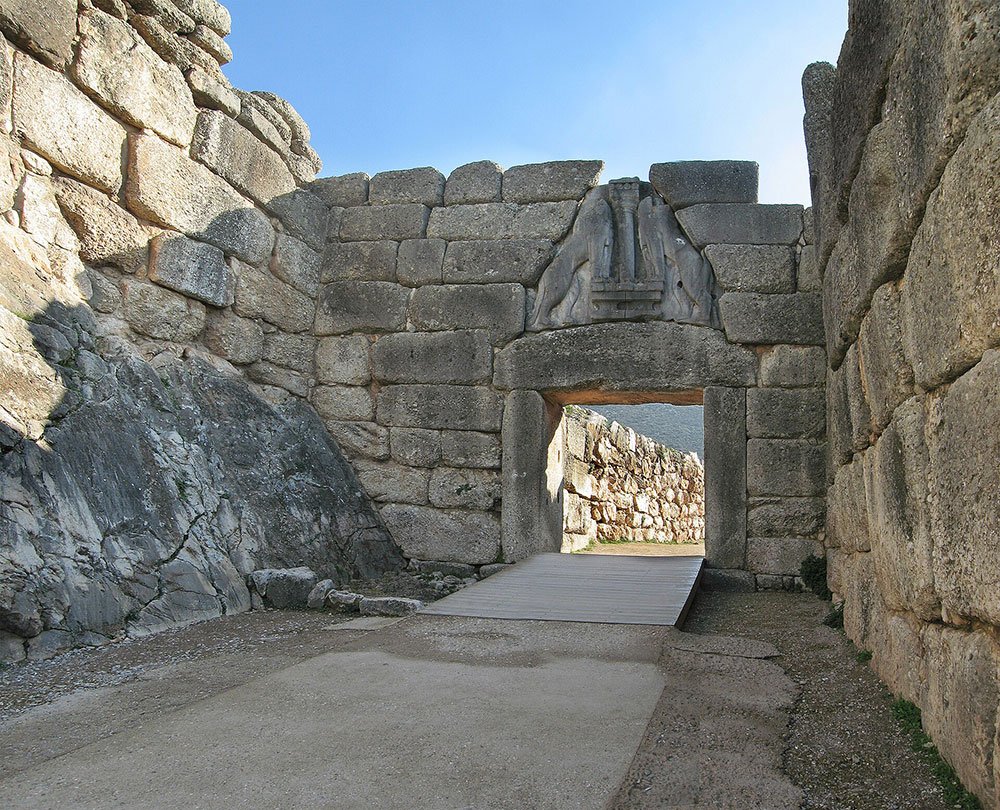
Archaeological sites of Mycenae and Tiryns
The archaeological site of Mycenae and Tiryns in the Peloponnese region of Greece stands as a testament to the ancient civilization that once thrived in this part of the world. These two sites, recognized as UNESCO World Heritage Sites, offer a unique glimpse into Greece’s rich history and cultural heritage.
Visitors explore these remarkable ruins and are transported back to an era when these ancient cities flourished and significantly shaped the Mediterranean world. From majestic fortresses to intricately designed tombs, Mycenae and Tiryns encapsulate the magnificence and grandeur of a bygone era.
Mycenae, located approximately 90 kilometers southwest of Athens, was once one of the most influential cities in Greece during the Late Bronze Age. It was home to the legendary King Agamemnon, who played a pivotal role in Homer’s epic poem, The Iliad.
UNESCO recognizes Mycenae and Tiryns as significant sites in Greece. These cities represent the flourishing Mycenean civilization from the 15th to 12th centuries BCE. These cities were characterized by palace economies and impressive architectural structures like the Lion’s Gate and the Treasury of Atreus.
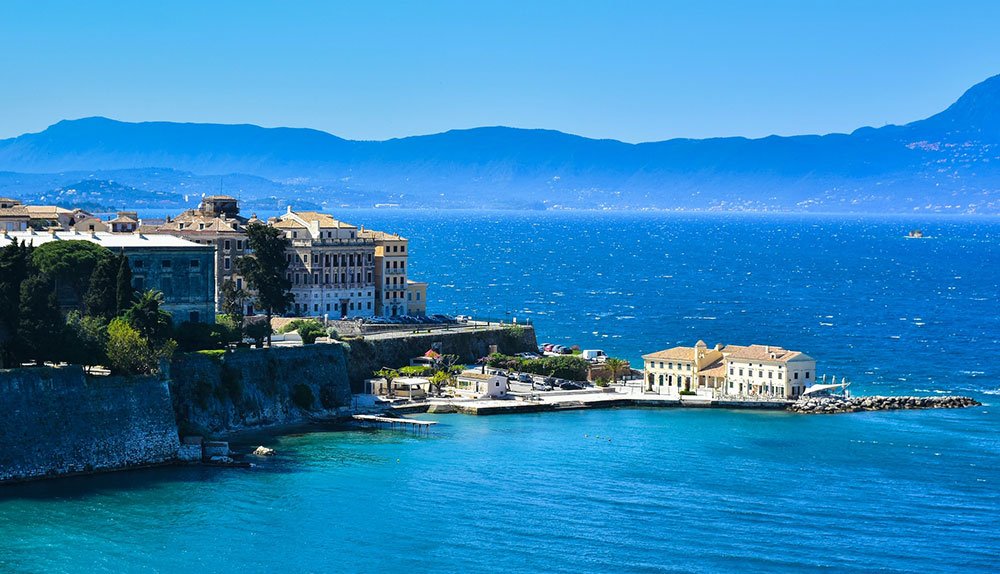
Old Town of Corfu
The Old Town of Corfu in Greece is a captivating destination designated as a UNESCO World Heritage Site. Steeped in history and culture, this ancient town showcases the legacy of various civilizations that have left their mark on its streets and buildings. The Old Town offers visitors a glimpse into the rich tapestry of Corfu’s past with its narrow alleyways, elegant Venetian-style buildings, and imposing fortresses.
Recognized for its outstanding universal value, the Old Town of Corfu represents a harmonious blend of Greek, Roman, Byzantine, Venetian, and British influences.
The Old Town of Corfu, situated on the island of the same name, has ancient origins tracing back to the 8th century BCE. Positioned at the gateway to the Adriatic Sea, this town held great significance in safeguarding the maritime interests of the Republic of Venice against the Ottoman Empire. To fortify its defenses, Venetian engineers erected three forts within the town. These historical landmarks are now recognized as UNESCO World Heritage sites in Greece.
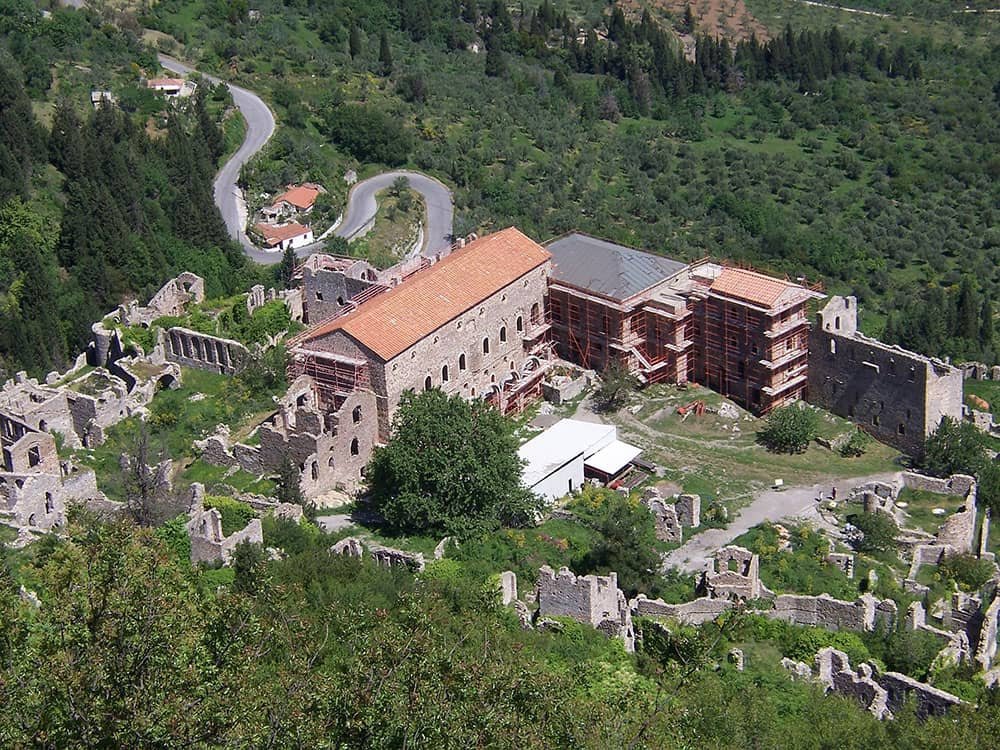
Archeological site of Mystras
Located in the heart of the Peloponnese region, the archeological site of Mystras stands as a testament to Greece’s rich cultural heritage. This UNESCO World Heritage Site draws visitors from across the globe with its breathtaking landscapes and well-preserved remnants of Byzantine architecture.
The establishment of the town of Mystras originated from the construction of a fortress in 1249 by William of Villehardouin, the Prince of Achaia, on the slopes of Mount Taygetus. In 1262, it was handed over to the Byzantines and experienced significant growth during the Palaeologan Renaissance period. Subsequently, the Ottomans captured it and later by the Venetians. Mystras is one of Greece’s UNESCO World Heritage sites.
Nestled on a hillside overlooking the modern town of Sparta, Mystras offers a captivating glimpse into the country’s medieval past. It invites visitors to step back in time and explore a once-thriving city that has frozen in history. With its significant historical and cultural value, Mystras is a jewel amongst Greece’s impressive collection of UNESCO World Heritage Sites.
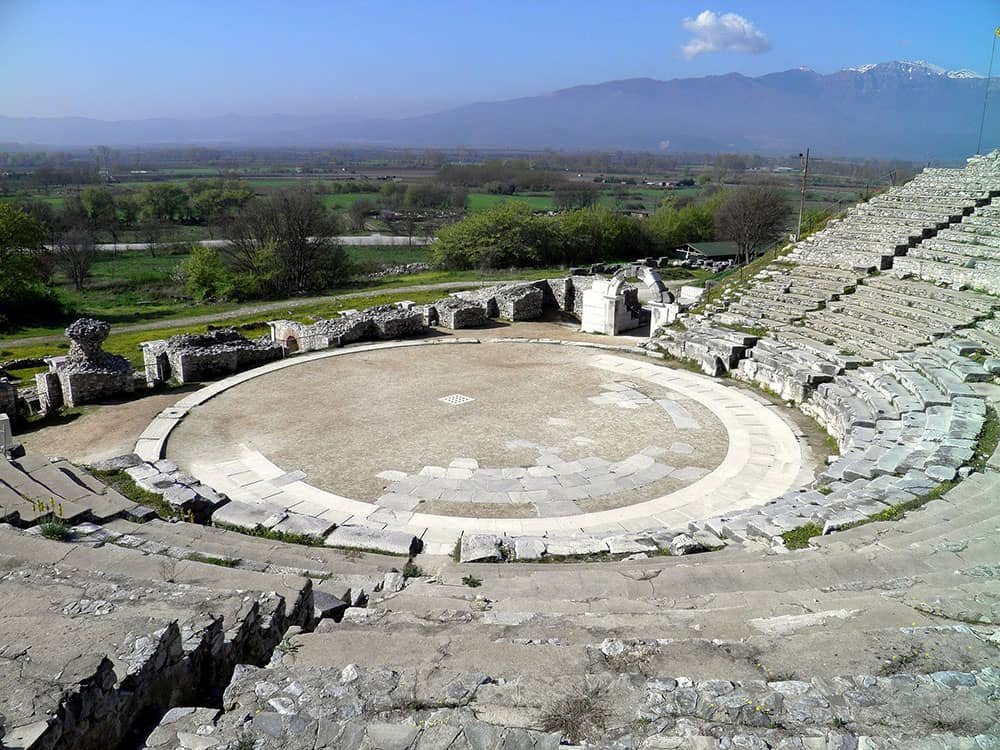
Archaeological Site of Philippi
The Archaeological Site of Philippi, located in Eastern Macedonia and Thrace, Greece, is a captivating testament to the region’s rich history and cultural heritage. Designated as one of the UNESCO World Heritage Sites in Greece, this ancient city is significant for its archaeological importance and connection to various historical periods.
As one explores the site’s well-preserved ruins, they are transported back to witness the remarkable blend of Hellenistic, Roman, and early Christian civilizations that once thrived here. Founded by Philip II of Macedon in 356 BC, Philippi flourished as a strategic center due to its location on a major trade route between Europe and Asia.
Philip II of Macedon founded the city of Philippi in 356 BCE. It served as a stop along the Via Egnatia and was the location of the Battle of Philippi in 42 BCE. The Romans transformed it into a miniature version of Rome, incorporating new public structures like a Forum alongside existing Hellenistic ones. After the Apostle Paul’s visit in 49-50 CE, Philippi became an essential hub for Christianity, evident from the remaining Christian basilicas and an octagonal church. These historical sites are recognized as UNESCO World Heritage sites in Greece.


